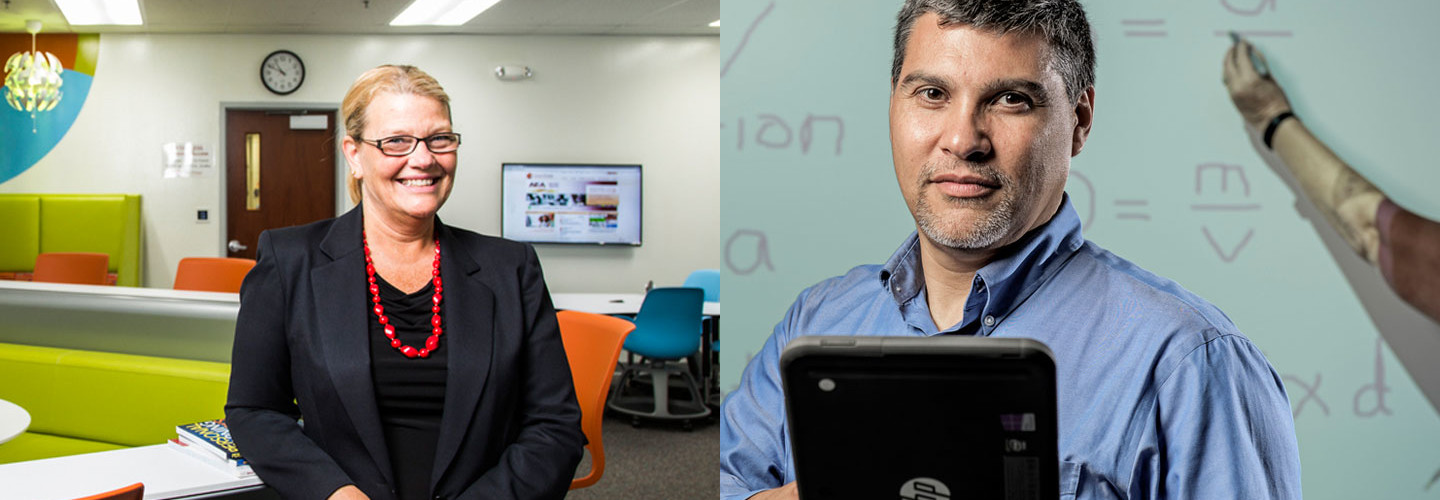Innovation Fosters Student-Centric Learning
Talk to technology people at school districts, and nearly everyone wants to take their community in the same direction.
The most progressive districts today are moving away from teacher-focused education and toward student-centric learning.
But what does that mean?
Sally Lindgren, director of technology and innovation for the Great Prairie Area Education Agency in Burlington, Iowa, says past educational reforms, including attempts to deploy technology, fell short because teachers never changed the way they were teaching.
“The reality was that teachers still stood in the front of the classroom and presented all the information to the students,” she says.
Lindgren says the Great Prairie Area Education Agency, which supports 39 school districts in Iowa as a resource for digital tools, developed its 21st-century classroom, or “Room 21C,” with educational change in mind.
Percentage of teachers who say it takes at least 10 months to plan new technology initiatives.
While some teachers already use Room 21C as often as twice a week, others are not as accepting of the changes.
“Teachers really need to understand this instructional shift,” she says. “They must become 21st-century learners before they can be 21st-century teachers.”
Richard Benvenuti, executive director of the Division of Instructional Technology, Instructional Materials and Library Media Services at Miami-Dade County Public Schools in Florida, says student-centric learning focuses on learning and outcomes as opposed to relying on teacher lectures as the center of the educational process. Student-centric learning breaks students into collaborative groups where they can learn from one another, with each teacher taking the role of a coach.
Technology is a big part of the effort.
“There are so many digital educational tools today that teachers are in the best position to sort through all the information and guide students to the ones that will be the most effective,” Benvenuti says.
In the past year, Miami-Dade deployed 11,500 88-inch Promethean interactive whiteboards and more than 61,000 tablets and notebooks. For the upcoming school year, plans are under way to roll out an additional 39,000 HP notebooks and tablets, with the ultimate goal of reaching 100,000 devices. The county consists of 18,000 classrooms, and the IT department supports 353,000 students. Benvenuti says that now that the new Promethean whiteboards have been deployed, all classrooms in the district have an interactive whiteboard.
The district’s digital convergence project has been the primary driver for the technology purchases, says Benvenuti, who adds that the district aims to change the way it delivers instruction.
“One aspect of digital convergence is in response to a new state requirement that 50 percent of all the educational materials we purchase must be digital,” Benvenuti says. “We also want our staff teaching in this new way.”
Embracing Group Think
Most learning will take place in groups, with teachers polling frequently and moving back into a lecture format when they feel that the group needs more work on a specific topic. As part of the interactive whiteboard purchase, Promethean has had four trainers onsite for the last year, helping teachers learn to use the whiteboard’s many features, Benvenuti says.
“We recognize that it’s a tremendous shift in teaching and learning,” Benvenuti says. “We want the teachers to be comfortable using these tools.”
The district’s professional development effort is tiered to accommodate different technology skill levels. It focuses on integrating all classroom technologies, including tablets, notebooks, curriculum, portal resources and the interactive whiteboards.
“The ultimate goal is to increase student engagement and interaction with technology,” Benvenuti says. “The increased interaction will lead to student ownership over learning and move Miami-Dade closer to a flipped classroom model.”
Samantha Becker, senior director of communications for the New Media Consortium and lead writer for the NMC Horizon Report series, says many more school districts are moving toward collaborative, student-centric learning.
School Library Journal reported that 66 percent of U.S. districts now offer e-books. The NMC has found that the creation of e-books is a big driver for more collaborative, digital learning in that e-publishing tools are accessible enough that students and teachers can create e-books together.
The Modern Classroom
Great Prairie’s Room 21C, which launched in the fall of 2014, was two years in development, and in the past several months its student-centric concept has been replicated in some of the Iowa districts, Lindgren says.
Each special classroom contains three features. Six learning areas are mobile and adaptable. Instead of rows and columns of desks, the classroom consists of flexible groups. Tables are on casters and can be raised or lowered to fit the ages of the students, and all the seats are swivel chairs that are easily moved. All tables include USB ports, a Promethean ActivTable and a MakerBot 3D printer.
Each group area also has a 50-inch flat-screen display or monitor. The monitors can display up to four student devices, allowing students to show their work and share it with the group or with other groups in Room 21C.
Finally, every collaboration space has a writeable surface. In lieu of interactive whiteboards, Room 21C was painted with IdeaPaint, which makes nearly the entire wall into a whiteboard. Lindgren says the only part of the wall that isn’t covered with the white paint is an area 150 inches across, painted gray to provide a large area for 3D projection and video conferencing.
“We find that this setup is very empowering,” Lindgren says. “Having students sit in the collaboration area, with monitors and a writeable surface, makes them more engaged with the content.”
Dedicated training sessions help familiarize teachers with the new digital tools and resources. These sessions also teach them how to break students into groups and demonstrate techniques for personalizing a student’s education.
Cameron Chamberlin, technology director at Cardinal Community School District in Eldon, Iowa, recently worked with Lindgren to deploy the Room 21C concept in his district. By knocking down a wall and converting two classrooms into one large space, they created a similar setup to Room 21C: five stations with 50-inch digital displays and writeable surfaces. Chamberlin agrees with Lindgren that teachers need special training to get the most out of these new technology rooms.
“We’ve been working with the teachers to take some of the concepts they learned in teaching in these new rooms and bring them back to the main classrooms,” Chamberlin says, pointing out that, eventually, more rooms like 21C will be added and as many classrooms as possible will convert to the 21st-century teaching techniques.
Google Apps for Education Powers Real Classroom Integration
Erik Haakonsen, chief technology officer of Bridgeport (Conn.) Public Schools, says so many collaboration tools are available today that districts must sort through them to ensure that the technology elevates the depth of learning for students.
“The idea is not to just replicate with technology what used to be done on paper,” Haakonsen says. “Technology provides the tools to enhance and transform the learning dynamic.”
Bridgeport takes its choice in tools seriously, and the deployment continues to evolve. The district initially installed interactive whiteboards but now is moving to wireless Epson BrightLink Pro 1430Wi interactive projectors. It’s also rolled out more than 12,000 Chromebooks and has committed to using SAFARI Montage, VMware virtual desktops and Google Apps for Education.
“With the interactive projectors, students have the ability to share what they are working on with the rest of the class,” he explains. “But with Google Apps for Education, they can access their work from anywhere. That access was really important to us.”
Chris Jones, deputy superintendent of instructional services at Wiseburn Unified School District in El Segundo, Calif., adds that Google Apps for Education also makes a huge difference in his district. Wiseburn consists of four district K–8 schools and four highly regarded charter schools, three of which are Da Vinci charter high schools and the fourth a K–8 home-school/independent study hybrid charter school. Together, the eight Wiseburn USD and Da Vinci schools serve about 4,000 students.
“Roughly 45 percent of the student population is on free or reduced school lunch, so it was important to us to get devices into students’ hands and give them that access,” he says. “Google Apps give students the freedom to access their work from any device with an Internet connection.”
Now that every student in the district has access to a Chromebook or some other device, they can break classes into groups and display student work on the monitors. Not every district has the funds to replicate the modern classrooms deployed in Miami-Dade County or in Iowa, but districts can use inexpensive computers and Google Apps to head down that general path. As the projects succeed, more communities will support them, and more teachers will embrace student-centric learning.








